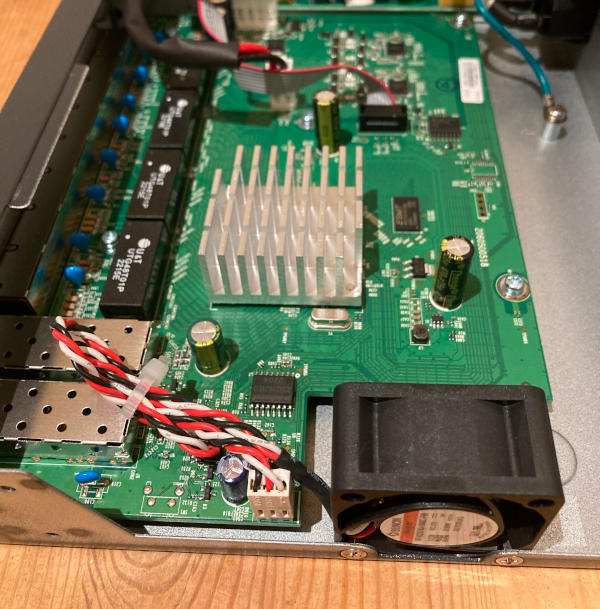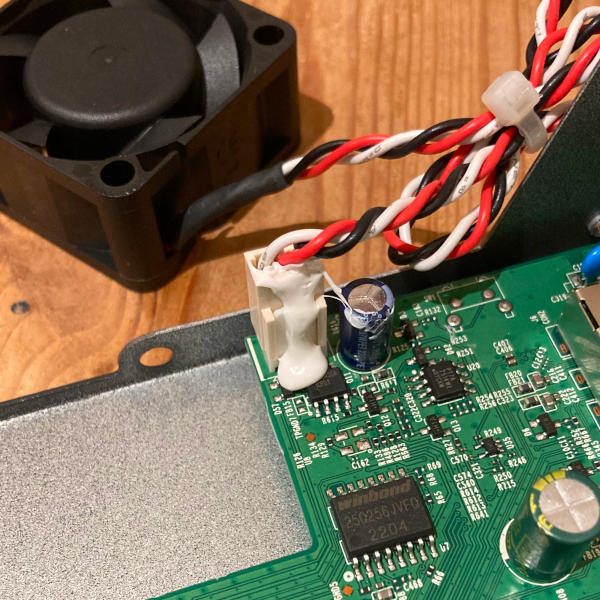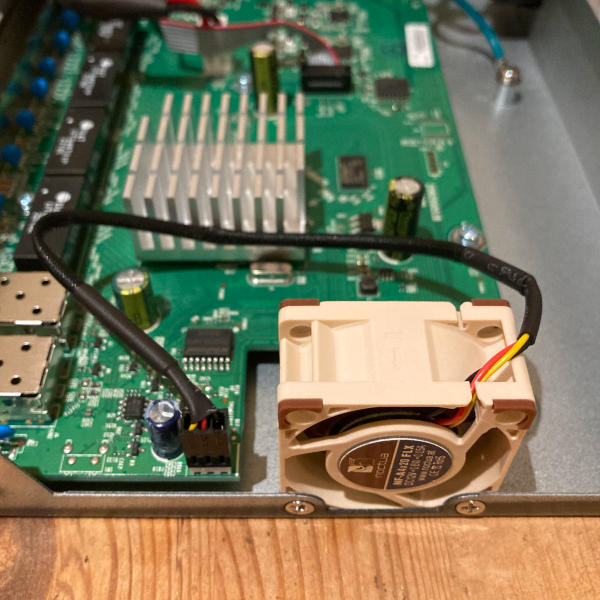TP-Link POE Switch Fan Replacement
Apr 18, 2023
The TP-Link TL-SG2210MP is a relatively inexpensive 10-Port Gigabit POE+ Switch, which I picked up for about 177GBP. It’s not really designed for home use, and the fan is…horrible. It’s loud, but more importantly incredibly whiny.
Luckily, I own a screwdriver.There is a large exposed power supply unit at the other side of the device to the fan, likely don’t touch this?

The fan inside my unit is a SUNON MF40201V3-1000C-F99. According to the linked product page it pushes 6.3 CFM at a static pressure of 0.11in h2o. A replacement fan would ideally hit these specs with a lower noise level.
I replaced the fan with a Noctua NF-A4x20 FLX which pushes 9.4 m3/h, about 5.5 CFM, at a static pressure of 2.26 mm h2o, about 0.09 in h2o. This is a little lower than the SUNON, but I’m bargaining that the provided fan is designed to handle a workload of up to 8 POE devices drawing a total of 150W, of which I will use a fraction.
Replacing the fan is straightforward, except that they glued the fan header in. Usually this is so that it does not come loose in shipping, but usually it is easy to remove hot-glue gun glue, whereas this is more like PVA?

I carefully scraped off the glue with a screwdriver and replaced in the Noctua fan. The fan is the same depth and the existing screws worked fine.

Fan noise
As a rough measure, I used a free smartphone app:
The switch has a loud full RPM spin up when it is first started up. These numbers are after that.
| Noise (dB) | |
|---|---|
| Base noise level | 36 |
| Stock fan | 49 |
| Noctua fan | 38 |
This is great! Subjectively, the Noctua fan is barely audible, and has no high-pitched whine.
Temperatures
There are no temperature sensors on the TP-Link, at least none that are exposed in the web interface or SSH interface. It was cool to the touch before the replacement, and it is cool to the touch now. Given the low load I am applying, this is expected.